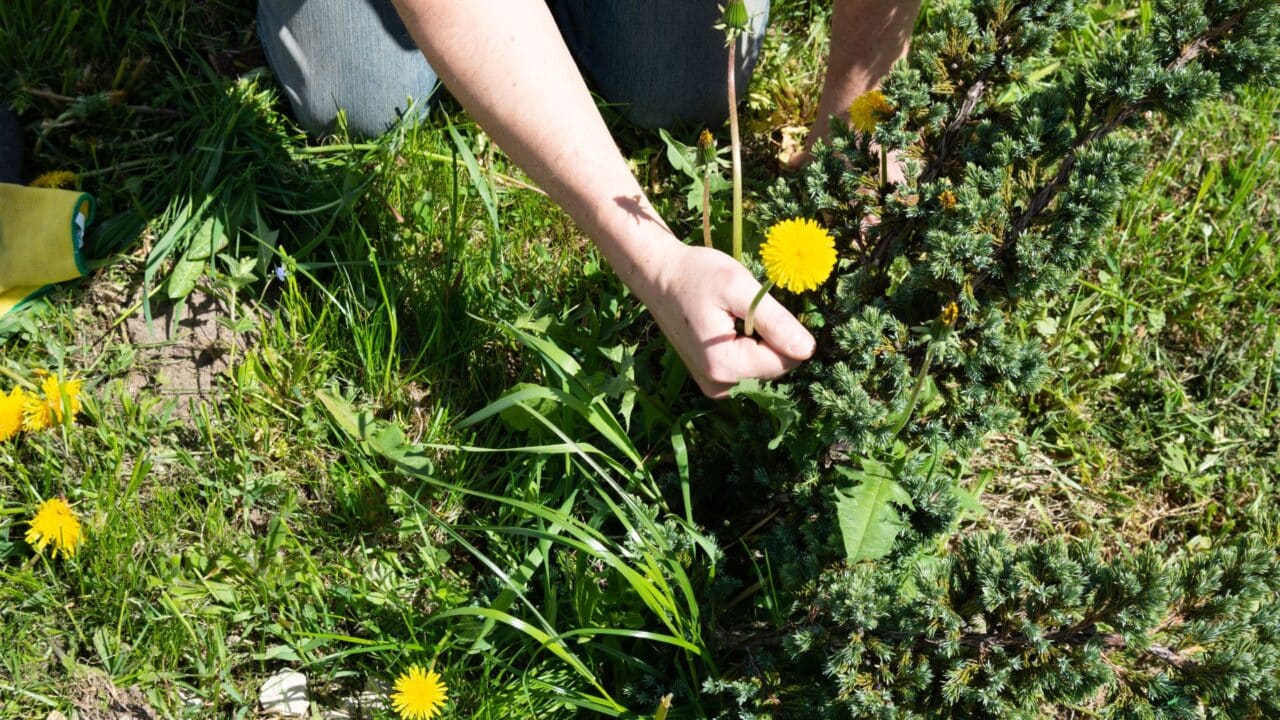To control lawn weeds before summer heat makes them harder to manage, act now with targeted treatments, regular mowing, and a thick, healthy turf. Late spring to early summer is your last best chance to stop weeds before they seed or thrive in heat.
How to Control Lawn Weeds Before Summer Heat Makes It Worse
Introduction
If your lawn is starting to look more weedy than green, you’re not alone. As temperatures climb, weeds grow faster and become harder to kill—especially without stressing your grass.
That’s why late May and early June are critical. You’re racing against rising heat, maturing weeds, and the summer slowdown of cool-season grass growth. This guide walks you through how to tackle weeds now so they don’t take over by July.
1. Identify the Type of Weeds You’re Dealing With
Not all weeds are the same—and treatment depends on what’s invading your yard:
🌿 Broadleaf Weeds:
-
Examples: Dandelions, clover, plantain
-
Usually have wider leaves and flowers
-
Easier to control with broadleaf herbicides
🌾 Grassy Weeds:
-
Examples: Crabgrass, foxtail, nimblewill
-
Look like grass and blend in easily
-
Require specialized pre-emergent or selective killers
🕵️♂️ Tip: Pull a few samples and use a local extension website or app like PictureThis or iNaturalist to ID unknown weeds.
2. Use the Right Weed Control Product at the Right Time
Timing and product choice matter more than you think.
✅ Pre-Emergent (Too Late for Most in June)
-
Stops weed seeds from germinating.
-
Must be applied before weeds emerge, usually in early spring.
✅ Post-Emergent (Perfect for June)
-
Kills existing weeds by absorption through leaves.
-
Choose selective broadleaf killers that won’t harm your grass.
-
Spot-spray to avoid blanket stress on your lawn.
🌡️ Apply in the morning or evening, when temps are below 85°F and there’s no rain for 24 hours.
3. Mow Tall and Often to Crowd Out Weeds
One of the best defenses against weeds is a thick, healthy lawn.
-
Raise your mowing height to 3.5–4 inches to shade out weed seeds.
-
Mow weekly or as needed to keep lawn consistent.
-
Avoid scalping or cutting more than 1/3 of the grass blade.
Taller grass = stronger roots + less sunlight reaching weeds.
4. Water and Feed Your Lawn Wisely
Weeds love stressed lawns. By contrast, well-fed, deeply watered grass makes it harder for weeds to thrive.
-
Water deeply (1 inch per week) but infrequently.
-
Apply a slow-release fertilizer if your lawn hasn’t been fed in 6–8 weeks.
-
Avoid feeding in extreme heat—early June is usually safe for one last application.
5. Manually Remove Problem Spots
For isolated or tough weeds:
-
Use a weeding knife or tool to remove roots.
-
Pull weeds after rain or watering—wet soil loosens roots.
-
Spot-spray stubborn returners with a targeted herbicide.
Persistent weeds like creeping Charlie may need multiple attacks across seasons.
6. Overseed Thin Areas to Prevent Future Weeds
Bare patches invite weed takeover. Before summer sets in:
-
Loosen the soil and add seed to thin areas.
-
Cover lightly with straw or compost.
-
Water daily until seed germinates.
Even in early June, a little overseeding can thicken up weak spots that would otherwise become weed patches by mid-July.
FAQ
Q: Can I use weed and feed products in June?
Yes, but only if temperatures are mild (under 85°F) and your lawn is actively growing. Follow label instructions and avoid over-application.
Q: What if my lawn is mostly weeds already?
If more than 50% of your lawn is weeds, consider a full renovation in early fall. For now, mow high and spot-treat to minimize spread.
Q: Should I pull weeds or spray them?
Both have value. Pulling is great for isolated broadleaf weeds; spraying works better for widespread or grassy weed infestations.
Q: Can I control weeds without hurting my grass?
Yes—use selective herbicides labeled for your grass type, and always follow instructions. Avoid non-selective products like Roundup on the lawn.
Q: How long does it take for weed killers to work?
Most post-emergent sprays show results within 3–7 days, though full die-off may take 2–3 weeks depending on the weed and product used.
Conclusion
The best time to control weeds is before the summer heat turns them into deep-rooted nuisances. Spot-treat actively growing weeds, mow high, and focus on keeping your grass healthy and thick. By taking action now, you’ll spend less time fighting weeds and more time enjoying your lawn.
Need help identifying or treating your weeds? Our lawn team can provide a site visit and game plan to get your turf back in shape—before it’s too late.

